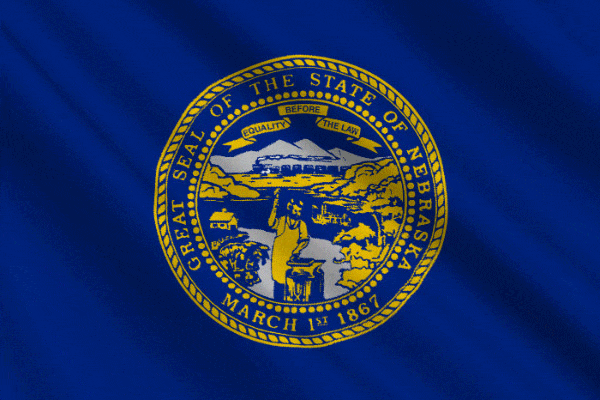 History French fur traders first visited Nebraska in the late 1600s. Part of the Louisiana Purchase in 1803, eastern Nebraska was explored by Lewis and Clark in 1804–1806. A few years later, Robert Stuart pioneered the Oregon Trail across Nebraska in 1812–1813, and the first permanent white settlement was established at Bellevue in 1823. Western Nebraska was acquired by treaty following the Mexican War in 1848. The Union Pacific began its transcontinental railroad at Omaha in 1865. In 1937, Nebraska became the only state in the Union to have a unicameral (one-house) legislature. Members are elected to it without party designation. Nebraska is a leading grain-producer with bumper crops of sorghum, corn, and wheat. More varieties of grass, valuable for forage, grow in this state than in any other in the nation. The state's sizable cattle and hog industries make Dakota City and Lexington among the nation's largest meat-packing centers. Manufacturing has become diversified: Firms making electronic components, auto accessories, pharmaceuticals, and mobile homes have joined such older industries as clothing, farm machinery, chemicals, and transportation equipment. Oil was discovered in 1939 and natural gas in 1949. Among the principal attractions are Agate Fossil Beds, Homestead, and Scotts Bluff National Monuments; Chimney Rock National Historic Site; a recreated pioneer village at Minden; SAC Museum near Ashland; the Stuhr Museum of the Prairie Pioneer Grand Island; Boys Town; the Sheldon Memorial Art Gallery and the Lied Center for the Performing Arts at the University of Nebraska in Lincoln; the State Capitol in Lincoln; the Joslyn Art Museum in Omaha; the Henry Doorly Zoo in Omaha; Museum of Nebraska Art in Kearney; Museum of Nebraska History in Lincoln; and the University of Nebraska State Museum in Lincoln.
|
Nebraska
Read this profile of Nebraska to learn about the state's history, points of interest, and government. Also find interesting facts about each state, including the state's motto, symbols, and when it entered the union.





